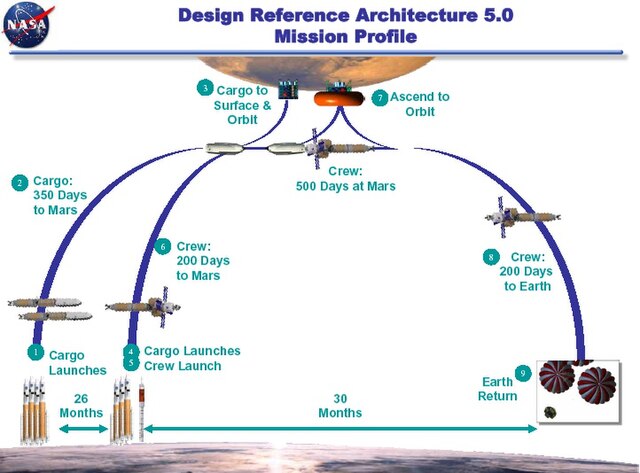Spacecraft design is a process where systems engineering principles are systemically applied in order to construct complex vehicles for missions involving travel, operation or exploration in outer space. This design process produces the detailed design specifications, schematics, and plans for the spacecraft system, including comprehensive documentation outlining the spacecraft's architecture, subsystems, components, interfaces, and operational requirements, and potentially some prototype models or simulations, all of which taken together serve as the blueprint for manufacturing, assembly, integration, and testing of the spacecraft to ensure that it meets mission objectives and performance criteria.
An example architecture from the mid-2010s of a human spaceflight mission to Mars, as envisioned by the United States space agency, NASA.
Solar sails are a method of spacecraft propulsion using radiation pressure exerted by sunlight on large surfaces. A number of spaceflight missions to test solar propulsion and navigation have been proposed since the 1980s. The first spacecraft to make use of the technology was IKAROS, launched in 2010.
IKAROS space-probe with solar sail in flight (artist's depiction) showing a typical square sail configuration
NASA illustration of the unlit side of a half-kilometre solar sail, showing the struts stretching the sail.
An artist's depiction of a Cosmos 1-type spaceship in orbit
Proposed material for the construction of solar sails - carbon fiber.





